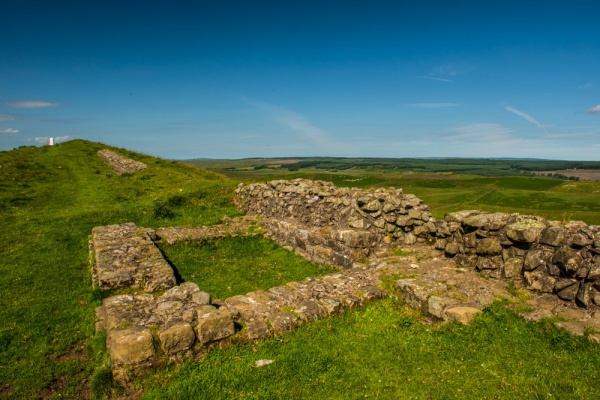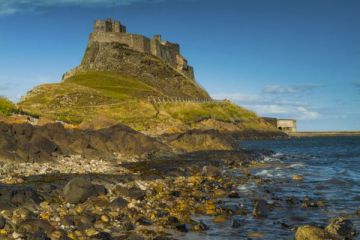
The milecastle is 18.3 metres wide by 15.2 metres, and the walls still stand to an impressive 3.2 metres in height. The milecastle was used as a farmhouse during the medieval period. It was excavated several times and several different phases of construction were uncovered.
During Phase I, a small structure with stone foundations was erected. Sometime in the late 2nd century, this was rebuilt with two buildings on the east and west side of the fort. In Phase III new buildings were erected, but these are not as well-built as the previous structures. This phase considerable industrial activity, including metalworking. A final phase consists of new stone footings built over the industrial area.
The wall in this location is a combination of 'narrow wall' and 'broad wall', showing how the design for Hadrian's Wall changed partway through the building process. On either side of the milecastle, the wall is 2.3 metres wide but stands on foundations 3 metres in width.
West of Milecastle 35 the Wall is covered in turf and stands to a height of 0.6 metres. To the north there is no outer ditch; it wasn't necessary, as the steep cliffs of bedrock at Sewingshields acted as sufficient deterrent to any attack from the north.
Visiting
Sewingshields can be reached on foot from Housesteads Roman Fort, a walk of some two miles along the Hadrian's Wall Path. It's a wonderful walk, with some of the finest views in Northumberland National Park. Parking at Housesteads is pay and display, but a ticket is valid at any major parking area along Hadrian's Wall for a 24 hour period.
Our family loved visiting Sewingshields. We walked from Housesteads on a lovely sunny morning in July, and the views along Hadrian's Wall and over the Crags to the north were simply superb.





 We've 'tagged' this attraction information to help you find related historic attractions and learn more about major time periods mentioned.
We've 'tagged' this attraction information to help you find related historic attractions and learn more about major time periods mentioned.


